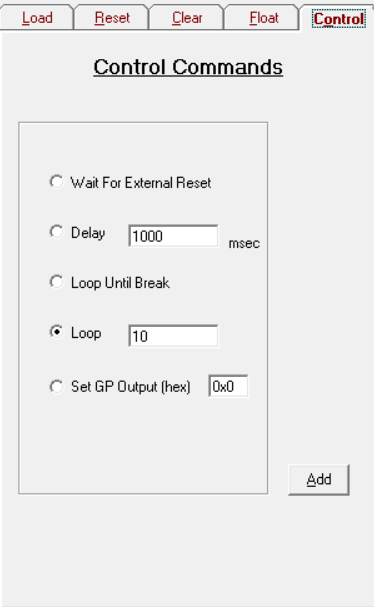DLPU040B October 2016 – March 2023 DLP650LNIR , DLPC410
- DLP Discovery 4100 Development Platform User’s Guide
- Trademarks
- 1Introduction
-
2Overview
- 2.1 The DLP Discovery 4100 Development Platform
- 2.2 DLP Discovery 4100 Development Platform Photo
- 2.3
Key Components
- 2.3.1 Xilinx Virtex 5 APPSFPGA
- 2.3.2 DLPC410 - Digital Controller for DLP Discovery 4100 Chipset
- 2.3.3 DLPA200 - DMD Micromirror Driver
- 2.3.4 DLPR410 - Configuration PROM for DLPC410 Controller
- 2.3.5 APPSFPGA Flash Configuration PROM
- 2.3.6 DMD Connectors
- 2.3.7 USB Controller
- 2.3.8 50-MHz Oscillator
- 2.3.9 DDR2 SODIMM Connector
- 2.3.10 Connectors
- 2.3.11 Battery
- 2.3.12 Power Supplies
-
3Hardware Overview and Setup
- 3.1 Getting Started
- 3.2
User Connectors and I/O
- 3.2.1 J12 Input Power Connector
- 3.2.2 J18 Input Power Connector
- 3.2.3 J1 USB Connector Pinout
- 3.2.4 J3 USB GPIO
- 3.2.5 J6 GPIO_A Connector
- 3.2.6 J8 DLPC410 Mictor Connector
- 3.2.7 J9 USB/APPSFPGA Mictor Connector
- 3.2.8 J13 DMD Flex 1 Connector
- 3.2.9 J14 DMD Flex 2 Connector
- 3.2.10 J15 DDR2 SODIMM Connector
- 3.2.11 J16, J17 EXP Connectors
- 3.2.12 H1 Xilinx FPGA JTAG Header
- 3.3 Configuration Jumpers
- 3.4 Switches
- 3.5 Power and Status LEDs
- 3.6 Test Points
-
4Software
- 4.1 Overview
- 4.2 DLP Discovery 4100 Operation
- 4.3 Graphical User Interface
- 4.4 Script and Status Operations
- 4.5 DLPC410 Control Window
- 4.6 Test Patterns Window
- 4.7 About Box
- 4.8 Links
- 5Related Documentation
- 6Appendix
- 7Revision History
4.3.3.5 Control Tab
The Control commands tab supports commands for script execution control, external reset, and digital output:
- The Wait for External Reset scripting command waits 10 seconds for an external global reset triggered by a rising edge on APPSFPGA input GPIO_A0. After 10 seconds, execution of the script resumes with the next command in the script. GPIO_A0 is a 2.5 Volt CMOS input.
- The Delay command delays for the specified time in msec.
- The Loop Until Break command loops until the Break button is clicked.
- The Loop command loops for the specified number of iterations.
- The Set GP Output command sets the value of the APPSFPGA general purpose digital
outputs GPIO_A(4 - 6). Value is entered in decimal or hexadecimal (e.g. 0x3). Bits 0, 1, 2
of value control the output state of GPIO_A4, GPIO_A5, and GPIO_A6 respectively. Bits 7,
6, 5, 4, 3 of Value are not used. GPIO_A(4 - 6) are 2.5 Volt CMOS outputs.
Note: NOTE: For more information on GPIO outputs see the DLP® Discovery™ 4100 Development Platform API Programmer’s Guide (DLPU039 § 5.2.24 and § 6.2.24).
 Figure 4-26 Control Tab
Figure 4-26 Control Tab